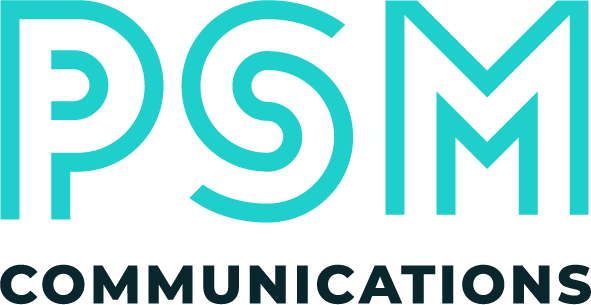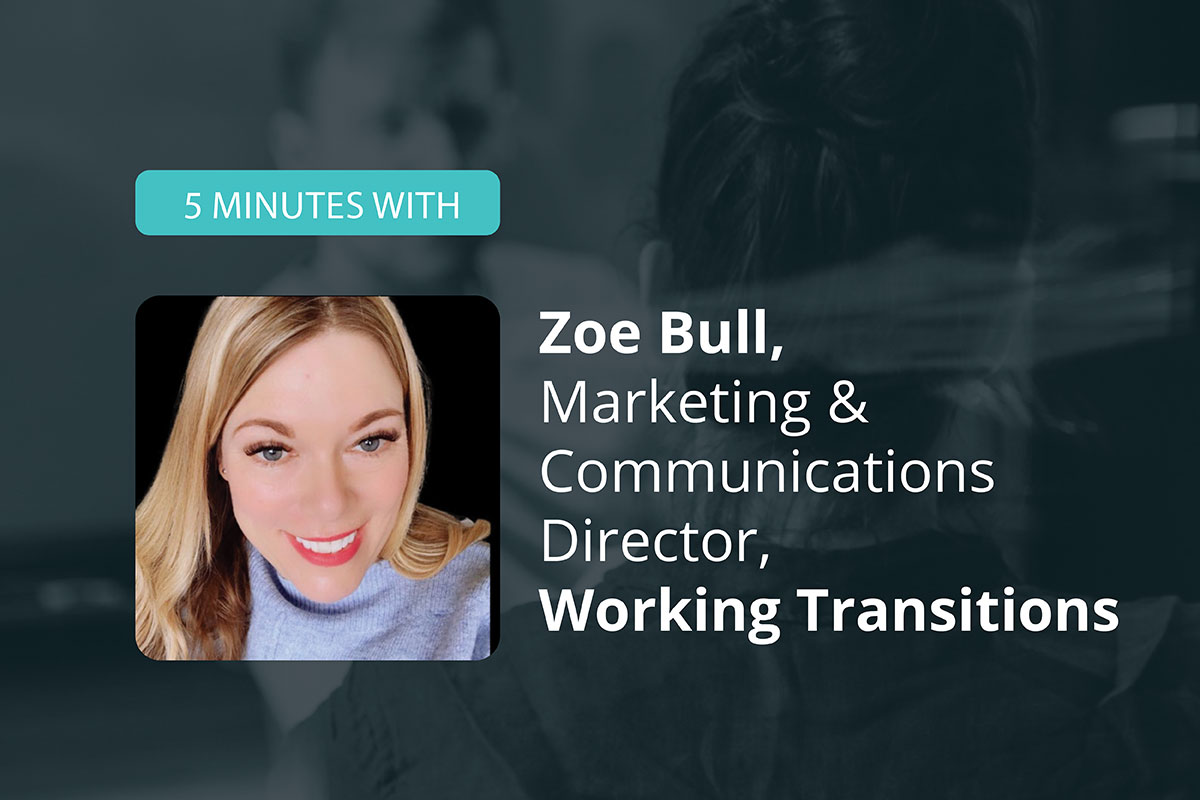This month I’m delighted to be speaking to Zoe Bull, Marketing & Communications Director at Working Transitions.
Here’s my 5 minutes with…
What is your Marketing Background?
My background is actually in sales and account management – I worked in Financial Services for a number of years and ‘fell’ into marketing when my son started school – I needed something closer to home with less travel. I’d always had an involvement in marketing – particularly around developing core messaging – in previous roles and found that many of my skills were transferable – having a sales background is actually really advantageous as it allows me to understand both sides of the table.
What does your role at Working Transitions involve?
Working Transitions is not a huge company – therefore the role is incredibly varied and ‘hands-on’. My key focus is on activities that generate leads – content, campaigns, digital, social strategy, PR and media. I’m also heavily involved in participant engagement and the ongoing development and enhancement of our proposition.
We’re a small team who generate lots in-house – we have a varied skillset and produce multimedia content including video, podcasts and thought leadership. No two days are the same and it’s an exciting and dynamic environment to work in!
I know the client experience is extremely important to you; how do you always ensure this is front and centre of everything you do?
Effectively, we have two types of clients at Working Transitions – the corporate client who pays the bill and the individual participants who benefit from the services that we offer. It’s a cliché, but ultimately we aim to deliver value in everything we do – whether it’s an e-mail campaign to a prospective client or a newsletter to somebody facing redundancy, we use our knowledge and experience – and that of our expert coaching team – to deliver something that is going to make a difference.
Many of our services are tailored specifically to our client’s specific requirements – we support them with bespoke marketing and communications to encourage uptake of the service – benefiting participants and increasing value for the client.
Feedback is really important across the organisation – we listen to what our clients tell us and take notice when something isn’t quite right. This is when being a smaller organisation is really beneficial – we have the agility to amend our processes quickly to ensure we’re delivering the very best service.
What are the fundamentals to you of a good campaign?
Oh, this is an area I’m passionate about! I’m going to have to bullet these!
- A good campaign strategy takes time to create and finesse – don’t rush it and don’t get something out of the door ‘just because it’s Thursday’. Really think about your messaging and what you want to say – deliver a coherent, aligned message over the course of your campaign and build up your story with each touchpoint
- Multi-media – you don’t have to be super whizzy here – or indeed spend any money – but do think about ways of delivering your message other than the written word. Infographics are incredibly effective for simplifying a complex message. Think about videos and animations too – there are some great tools online that are surprisingly easy to use and can help you create some really effective and professional content.
- I firmly believe that traditional ‘hard’ mailers can still be really effective in getting attention – don’t discount them. They can be a great way to ‘tie-up;’ a campaign – send them as the final piece – perhaps with a discount voucher or similar. Keep your branding and messaging really coherent across both your e-mail campaign and hard copy campaign and you’ll be surprised at the cut-through you get.
- Do not be tempted by clickbait!! It can be tough – particularly if you’re measured on open rates but please don’t sensationalise your subject line! It’s annoying, it’s spammy and the only increase you’ll get is in your unsubscribe rates! If you’re talking about the right thing and you’re delivering quality content that offers value to the reader you’ll build credibility and encourage readers to engage with future content.
- A clear CTA is key! When designing your campaign, really think about what your call to action is – do you want readers to visit your website? Call you? Subscribe to your newsletter? Make it really clear and easy to do.
What has been the best campaign you have delivered and why?
For me, the best campaigns are always the ones that you feel passionate about. We’re delivering a campaign at the moment on our brand new executive outplacement programme ‘ARC’. The marketing team have put blood, sweat and tears into getting the programme ready to launch so we’re excited to see it finally live. Because we’ve been so instrumental in creating the messaging and developing the proposition we’re really on board with ‘why’ it’s so great – and we can’t wait to shout about it!
In addition, any campaign that includes a client’s viewpoint – particularly when sent to somebody who may be in a similar situation – is always a good bet!
How do you measure the impact of your campaigns?
Like most marketing departments, we can assess engagement rates by understanding open rates, click-through rates and unsubscribes. By understanding what our clients are engaging with we get a better insight into what areas are of interest to them – this allows us to build up a picture and deliver content that we know will resonate. Our sales team follow up on campaigns and, by speaking to clients, and hopefully moving them further through the sales process, can feedback as to what is working and what is helping them to make the conversions.
What are the KPIs that your leadership team put upon marketing?
Our remit is to generate quality leads to feed the sales engine. These can come from a variety of sources including campaigns, website visitors – particularly those who have visited ‘high-value’ pages, downloads and sign-ups, and event and webinar attendees. KPIs are in place for all of these – but overall, our focus is on effectively engaging and demonstrating our quality approach to our target clients.
If you were told you could only report on 3 key metrics, what would they be?
Newsletter sign-ups – this tells us that we are hitting the mark and our clients want more of the content we are delivering.
LinkedIn Followers – for the same reason – an increase in followers tells us that our social strategy is delivering value.
Anecdotal feedback – far more powerful than any metric – what our clients and participants tell us about their experience helps us improve and forms an integral part of our future strategy.
Digital and social are extremely important to you and your success. What are some of the emerging trends you’re seeing in these areas.
Business Development Webinars are working really well for us at the moment. We’ve delivered on a range of subjects and interest has been high. It’s a great way to deliver content in a cost-effective way that allows you to demonstrate expertise and thought leadership. It’s low commitment for the attendee but demonstrates real engagement.
For our participants, engaging with them via bespoke portals that house a range of multi-media tools and resources offers far more value and personalisation than standard written collateral.
How important is it for you that marketing has a seat at the leadership table?
Marketing is an integral part of our organisation – we bring creativity and a way of ‘doing things differently’ to the table – continuously looking to improve and enhance both the Working Transitions brand and proposition. Customer experience is hugely important to us and our deep understanding and input to the customer journey allows us to introduce touchpoints that delight our clients and accelerate us ahead of our competitors.


No comment